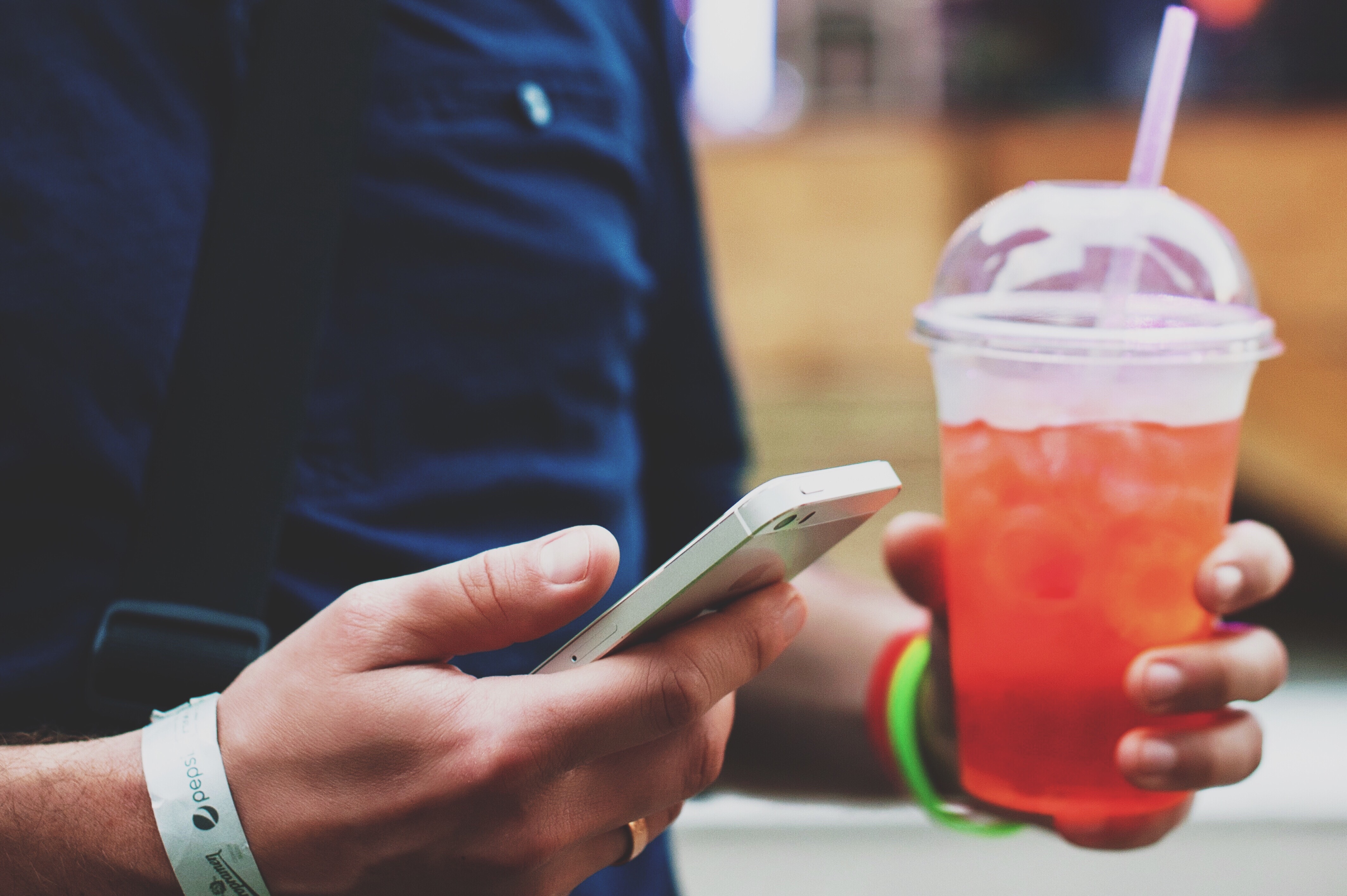We live in a digital world, and technology continues to be a growing trend in all industries. The restaurant industry is no different. Everything from third-party delivery, apps, online ordering, digital signage, artificial intelligence and automation technology. Over the years, restaurant apps have been appearing more frequently. According to Statista, diners use mobile restaurant apps to view menus and pricing (35 percent), search for discounts (37 percent), order food online (23 percent) and make reservations (32 percent).
Is it worthwhile for your restaurant to develop an app?
Before making a decision, several factors must be considered, including restaurant size and segment, overall business goals, costs, and how the app is developed.
Restaurant Size and Industry Segment
The first question to ask: Is a mobile app right for your business at this stage and in this segment? If you are in the fast casual or quick service restaurant segment, you’ll find apps a bit more prevalent there compared to others.
However, the number of units your restaurant has will play a large part in the decision to create an app. If your restaurant has a single unit, a mobile app probably isn’t a feasible investment because expansion may be your priority. If you’re a multi-unit operator, an app would allow for customers to acquire rewards at multiple locations, thus increasing customer loyalty regardless of where they interact with your brand.

Creating an app has several benefits, including convenience and building your audience. Furthermore, your brand can earn wins with potential guests by providing an intuitive user experience, which could positively affect the bottom line. As a matter of fact, Olo reports that online and in-app ordering has helped restaurants increase their basket size by 25 percent.
Business Goals
Another step in the decision-making process would be to think about the goals you’ve set for your restaurant and the outcomes you’d like to achieve from an app. If you’re a multi-unit operator and want to attract more franchisees, developing a great app could work in your favor.
A restaurant’s large and loyal customer base could attract franchisees, and an app can provide an additional revenue channel that reaches a wide audience. If your goal is to boost brand awareness and increase reach, an app could provide you with another valuable touchpoint with existing customers and potential guests.
Before making an investment, it’s always important to ask why. And investing in an app is no different. What are your desired outcomes from developing an app? Whether it’s brand awareness, building customer loyalty, or creating incentives and promotions around your specials, consider these factors and others, prior to creating a mobile application.
Costs
Once you’ve decided an app is a good investment, how will it be developed?Operators can use an app development firm, a freelance developer, or do-it-yourself app builder. A development firm can create an app for $5,000 to $50,000. The freelance developer comes at an hourly cost of $50 to $80, whereas a do-it-yourself app builder can cost $30 to $649 a month. Choose the development option that best fits your budget (and timelines).

The app development firm would alleviate most of the responsibility for maintenance and initial development, as you would pay them to handle the logistics of the app. A freelancer would also handle the maintenance and initial development. On the flip side, the do-it-yourself app builder would put much of the development and maintenance responsibility on the operator. But, note that app building platforms offer templates and often have step-by-step instructions to make the process as painless as possible. Platforms even allow app access across multiple platforms, providing restaurants a way to expand reach. For operators of smaller restaurants, an app builder would be the most affordable app creation route. To make the vetting process easier, Mashable has listed do-it-yourself app builders to help decide which platform will work best for your restaurant.
Rewards
People love incentives to buy things! When a restaurant app offers rewards for a certain amount of money spent through tracking in-app purchases, the restaurant is ultimately driving repeat customers. These purchases, which some apps track as points, dollar figures or the number of times the customer has made store visits, allow customers to use those rewards for earning things such as free menu items, coupons, and other special offers. Customers are rewarded for loyalty. This, in turn, creates customers that are more likely to become repeat buyers. In fact, 80 percent of customers would return to restaurantsto reap the benefits from the app. Another benefit of rewards is for incentivized referrals. Through referrals, your restaurant gains a new customer and increases the loyalty of your current customer. That’s a win-win.
Apps can track rewards in different ways. For example, Chick-fil-A uses a point-based system that increases every time a customer makes a purchase. Incentive-wise, take a page from BJ’s Restaurant and Brewhouse. The company rewards customers who simply download the app with a free dessert. Domino’s takes rewards to the next level and gives customers who download the app, rewards for eating pizza – even if it wasn’t a Domino’s pizza.
Another step to perfect your app’s rewards is to utilize push notifications as a way to remind your customers of rewards waiting for them to redeem. Chick-fil-A’s app will trigger a push notification occasionally, reminding the app’s users that that they have a “treat” waiting to be used.
Imagery
Similar to shopping online, pictures help customers make purchasing decisions about their food. Entice your customers with high-resolution pictures of menu options. This not only looks appealing but allows customers to see the ingredients and options to customize selections. Apps bring the decision-making experience to your customers’ fingertips.
In-App Ordering
Consider this app feature a huge win! Your customers prefer convenience, especially when so many options exist allowing customers to order food easily from a smartphone. With your own branded app, you can ensure that menu options and pricing are fingertip-ready for customers’ selection and modifications. Once ordered, the customer can choose to pick up their order in designated restaurant areas, or never leave their vehicle by using the drive-thru to get pick up food. Chick-fil-A and McDonald’s allow customers to claim their orders in the restaurant, in designated curbside areas, or in the drive-thru after ordering and paying for their food through the app. If you partner with a digital ordering partner like GrubHub or Olo, the order gets pushed to your restaurant via a tablet and then must be manually entered into your POS. Unless your POS has an integration to a kitchen display system, then it’s routed directly to the kitchen.

When customers visit your app, you want their experience to be as seamless as possible. Follow the lead of Amazon and Domino’s apps, for example. Customers can order and pay immediately through “one click buy” and “zero click” features. In both apps, customers can re-order their recent purchases within their account. Simple and secure in-app payment processing can enhance the user experience, while meeting the customer’s desire for convenience.
Order Tracking and Check-In
Once completing an in-app purchase, customers want to know when their orders will be ready. If you have a kitchen display system, you can provide customers real-time order status updates. This allows your customers to time their restaurant arrival, minimizing wait time. After arrival, they can check in through the app to ensure their food is fresh. Consider push notifications that keep customers aware of order status in real time. For example, third-party delivery app DoorDash uses push notifications at every stage of the order, from processing to the delivery. Providing customers with as much information as possible allows for an efficient ordering process.
Feedback Options
You value your customers’ opinions. Once they’ve placed their order, you can use an app to follow up with them and learn about their brand experience. Push notifications are a good option for this because a survey can be triggered in the app once the customer receives their meal. This feedback can provide more effective restaurant operations and allow you to meet your customers’ needs quickly.

Restaurant App Examples
Need some inspiration? Check out the apps from these restaurants and use them as a reference when considering your own apps’ user experience.
Chick-fil-A: Customers earn points with every purchase and can earn free menu items. Customers can also order ahead and choose to pick up their food in the drive-thru, curbside or in the restaurant.
Domino’s: Users earn a free two-topping pizza after 6 orders of $10 or more. Recently, Domino’s launched a campaign that allows customers to earn points for eating pizza, even from their competitors.
BJ’s Restaurant & Brewhouse: When customers download the app, they get a free dessert. They also get points for every purchase that can be redeemed for deals.
Chili’s: Customers download the app and receive a free chips and salsa and are awarded sixty points. For future visits, guests get two points for every dollar spent.
Ready to Get Started?
An app is a great way to build a loyal customer base through rewards, incentives and coupons. Multi-unit operators and franchisees alike can reap the benefits of an app if they decide it’s a worthwhile investment. Whether or not restaurateurs make this decision, apps are common throughout the industry. Whatever you decide, it’s what’s app-ening.
What’s App-ening: The Era of Restaurant Apps posted first on happyhourspecialsyum.blogspot.com

With their new site all set, Cart Geek accentuates their convenient conveyance and every minute of every day support system.The center is around getting customer data, making altered items, and keeping an open line of correspondence. CART GEEK
ReplyDeleteSqueezy is a pelvic floor muscle practice application that assists ladies with improving their pelvic floor wellbeing. The application helps by instructing and propelling clients with a broad media guide and data on the most proficient method to do the activities accurately. Squeezy
ReplyDeleteThe advancement possesses a land region of 633,000 square feet (sq ft) with a plot proportion of 2.1. Unit sizes extend from 452 sq ft for a one-room and 2,669 sq ft for the biggest five-room penthouse. The 12 porch units start from 2,659 sq ft and the six lodge units are 3,832 sq ft each. Other than having common offices like clubhouses and multi-reason diversion and game rooms, the townhouse is additionally in closeness to prepare stations and shopping centers. The nearest MRT station is Clementi, which is a nine-minute leave by means of an up and coming shielded walkway.
ReplyDeletefourth avenue residences condominium/